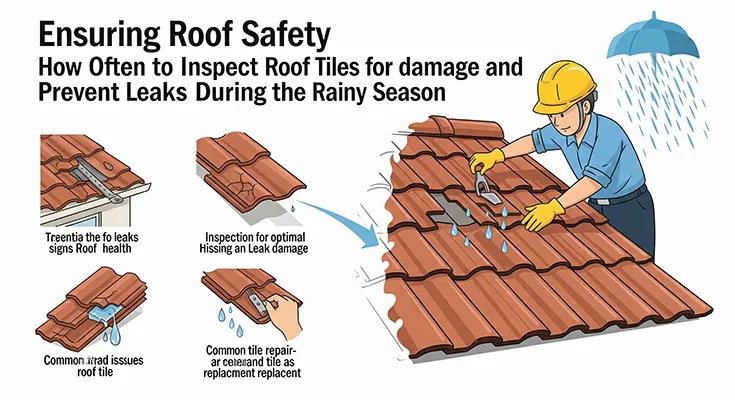As the rainy season approaches, it becomes crucial for homeowners to pay close attention to the condition of their roof to prevent leaks and water damage. Roof tiles are an essential component of any home’s structure, and regular inspections are necessary to ensure they remain in good condition and can withstand the harsh weather conditions. In this article, we will discuss how often to inspect roof tiles for damage and provide tips on preventing leaks during the rainy season.
1. Regular Inspections:
Regular inspections of roof tiles are essential for identifying any signs of damage or wear and tear. It is recommended to inspect your roof at least twice a year, ideally before the rainy season begins and after it ends. During these inspections, look for cracked, broken, or missing tiles, as well as any signs of deterioration or leakage. Additionally, check for moss, algae, or debris accumulation on the roof, as these can contribute to water damage and leaks.
2. Signs of Damage:
Understanding the common signs of roof tile damage can help homeowners identify potential issues early on. Some common indicators of roof tile damage include:
- Cracked or chipped tiles
- Missing or loose tiles
- Water stains on ceilings or walls
- Sagging areas on the roof
- Damaged flashing or sealant around chimneys, vents, or skylights
If you notice any of these signs during your roof inspection, it is crucial to address them promptly to prevent further damage and potential leaks.
3. Preventive Maintenance:
Preventive maintenance is key to ensuring the longevity and durability of roof tiles, especially during the rainy season. Here are some preventive measures to help prevent leaks and water damage:
- Trim overhanging branches: Branches hanging over the roof can cause damage to roof tiles and create debris buildup. Trim any branches that come into contact with the roof to prevent damage.
- Clear gutters and downspouts: Clogged gutters and downspouts can lead to water overflow and damage to roof tiles. Regularly clean and inspect gutters to ensure proper drainage.
- Repair damaged tiles promptly: If you identify any damaged or missing roof tiles during inspections, make sure to repair or replace them as soon as possible to prevent leaks.
- Seal gaps and cracks: Inspect the roof for any gaps, cracks, or openings that could allow water to penetrate. Seal these areas with appropriate sealants to prevent water infiltration.
4. Professional Roof Inspection:
In addition to regular DIY inspections, consider hiring a professional roofing contractor to conduct a thorough roof inspection at least once a year. A professional roofer can identify potential issues that may not be visible to the untrained eye and provide recommendations for maintenance or repairs to keep your roof in optimal condition.
Regular inspections of roof tiles for damage and preventive maintenance measures are essential for protecting your home from leaks and water damage during the rainy season. By staying proactive and addressing any issues promptly, homeowners can ensure the safety and integrity of their roof, providing peace of mind and protection against the elements. Remember, a well-maintained roof is a crucial investment in the long-term durability and security of your home.










